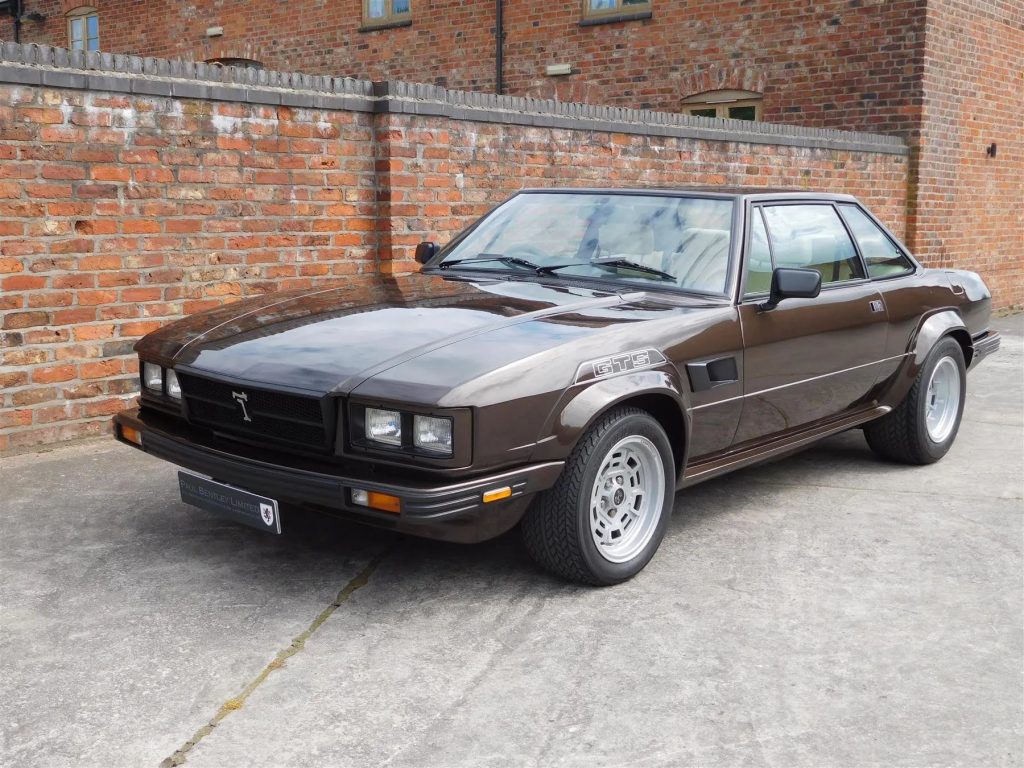Fifty years ago, Italy’s design houses came up with a new angle. Forget freehand sketching – 1972 would be the year of the protractor and ruler. Geometry teachers the world over rejoiced.
Straight lines and acute intersections would show the progress of technology, leap away from the sensuous curves of the Sixties, and follow the sharp shapes of Marcello Gandini’s ground-breaking Lamborghini Countach.

Everyone was at it, from Pininfarina to Bertone to Giugiaro and Ghia for Fiat, Ferrari, Lancia, Maserati, and De Tomaso. The result was a run of angular Italian automobiles that remain as striking today as they did five decades ago. Let’s revisit them – have a ruler to hand.
Ferrari 365 GT4 2+2

Ferrari’s replacement for the swoopy 365 GTC/4 was a stark contrast to its predecessor. Literally the only curves to be found were the compulsory wheel arches, with the rest of the car designed around the straightest of lines by Leonardo Fioravanti at Pininfarina. This four-seater coupé sat on an extended version of the GTC/4’s tubular steel chassis and came with a 4.4-litre version of the famous Colombo V12, fed by no fewer than six carburettors.
Quirks? The body was steel but the floorpan was fibreglass and the rear suspension featured a hydraulic self-levelling system. It was also the first Ferrari available with an automatic transmission. Predecessor to the 400-series Ferraris – the car of choice for Piero Ferrari – it also shares their (relative) affordability. The Hagerty Price Guide puts even an excellent, Condition 2 car at £53,300 – making it one of the most affordable prancing horses of all.
Lancia Stratos

Legend has it that Bertone persuaded Lancia to build the Stratos after turning up at the factory and driving under the barrier in the Stratos Zero prototype. That car would be revealed to the public at the 1970 Turin Motor Show, and a year later the prototype Stratos HF was unveiled. Penned by Marcello Gandini, the Stratos would take over rally duties from the successful Fulvia HF with the first testing of prototypes taking place during 1972 (our excuse to include it here).
Power came from a 190bhp Dino Ferrari V6 and 500 cars were built to meet homologation requirements, although the final number fell slightly short due to a change in regulations. Road versions would accelerate from 0-62mph in just 6.8 seconds and reach 144mph flat out. On the rally stage the Stratos was a stormer, winning the 1974, 1975, and 1976 World Championships driven by Sandro Munari and Björn Waldegård. Rallying never looked so stunning and probably never will again.
Fiat X1/9

Gandini really was the wedge wizard, and thanks to Fiat his design was democratised in the form of the inexpensive X1/9. Gandini had sown the seeds with his 1969 Autobianchi A112 Runabout concept car, but it would be Fiat that put it into production as a two-seater targa-topped sportster.
It looked a million dollars, but the genius was using the engine and transmission from the Fiat 128, mounted transversely amidships to keep the price down to just £3414 when right-hand drive models eventually arrived in the UK in 1976. The little 1.3-litre engine produced just 67bhp but the X1/9 was light and agile which elevated the fun factor. Fiat built 160,000 X1/9s, most of which will sadly have rusted away by now. As a result, a good, Condition 3 car from 1972 now costs an average of just £5200. The best examples in the country command £20,400.
Maserati Merak

Giorgetto Giugiaro’s design for an entry-level Maserati was a little softer than those of his hard-edged rivals. Based on the earlier Bora, the biggest styling difference was the replacement of the glass fastback with a flat rear deck and flying buttresses. Mechanically the changes were more significant, with the Merak using the 3.0-litre V6 engine developed for the Citroën SM, as well as hydropneumatic systems for the brakes, pop-up headlights, and the clutch.
Just as in the SM, this combination of Italian and French engineering philosophies was fabulous in theory but not always so effective in practice. As Citroën shed Maserati from its stable, so the Merak would become more conventional over its 11-year lifespan. The Merak remains something of a steal compared to the Bora, and Hagerty values a Condition 3 (good) car at a rather reasonable £32,100.
De Tomaso Longchamp

It’s fair to say that many De Tomaso owners have a love/hate relationship with their cars. Elvis Presley famously shot his Pantera, of course, while the handling of the Mangusta was plain terrifying. The Longchamp of 1972 was a development of the unloved Deauville sedan, fitted with the 330bhp 351 cubic-inch Ford V8 from the Pantera.
Its styling, by Tom Tjaarda at Ghia, certainly embraced the straight lines of the Seventies, albeit rather less successfully than rivals. It therefore won’t surprise you to know that not very many were sold, despite production continuing well into the Eighties. It’s estimated that just 395 Longchamp coupés and 14 Spyders were built.
Via Hagerty US
Read more
Maserati 3200 GT video: “It feels like a huge amount of car for your money” | Hagerty UK Bull Market List
10 Unexceptional Classics: Edizione Italiano
Cheddar Gorgeous: 10 times Britain perfected the wedge car









Think you may have forgotten the other 140,000 other X1/9s that Fiat made, making it an accessible model for sure.
They may have rusted, but not that badly! Thanks – we make it 160,000 total for the X1/9.